The Jefferson Thanksgiving Challenge
We challenged alumni chefs to create Thanksgiving dishes using only the ingredients that would have been available at Monticello during Thomas Jefferson's time.
From music to mince pies, the holiday season was a bustling time at Monticello, no more so than at the dinner table. Provisioned from Monticello’s vast vegetable gardens as well as local markets and friends abroad, holiday meals consisted of many of Thomas Jefferson’s favorite ingredients, from his beloved Newtown apples, which he once had shipped over to France when he served as the United States Minister there, to chocolate served hot from a silver dish known as “the duck.”
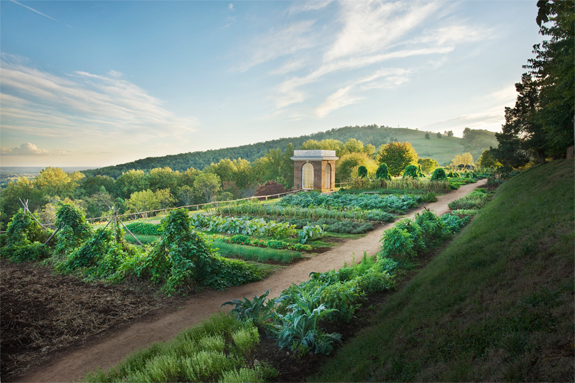
For our Jefferson Thanksgiving Challenge, we imagined what Jefferson might have eaten if he celebrated the holiday with a feast. We created a list of winter ingredients available to Monticello in Jefferson’s time and challenged four UVA alumni chefs to create Thanksgiving fare using only those ingredients. In the following dishes, the chefs use their expertise to give the Jeffersonian ingredients a modern twist.
The Ingredients
- Apples: Jefferson planted 18 varieties of apples in his South Orchard at Monticello, though many types did not thrive.
- Beets, Onion, Parsnips, Potatoes and Tarragon: According to Peter Hatch, the recently retired director of Monticello’s gardens and grounds, Jefferson’s kitchen garden terrace was a thousand-foot-long “experimental laboratory where he cultivated 330 varieties of vegetables.” Many of the vegetables served at Monticello, however, were purchased from Monticello’s slaves, who grew their own gardens on the outer acres of the plantation and “maintained an alternate economy” by selling their vegetables and other foods.
- Cabbage: Jefferson’s records show that he planted 18 different varieties of cabbage at Monticello.
- Chicken: Many different types of poultry lived at Monticello. In 1771, Jefferson wrote in his memorandum book, “Thin the trees … Keep in it deer, rabbits, Peacocks, Guinea poultry, pidgeons &c. Let it be an asylum for hares, squirrels, pheasants, partridges … court them to it by laying food for them in proper places.”
- Chocolate, Coffee: Jefferson ordered coffee and chocolate from a Richmond grocer, along with many other items he considered necessities. According to historian Gaye Wilson, he was clear about the type of coffee he wanted, writing to his cousin, George Jefferson, who assisted him with orders, “Bourbon or E. India [coffee] would always be preferred, but good West India will give satisfaction.”
- Cream: James Hemings, Jefferson’s enslaved chef at Monticello, was trained in France, having accompanied Jefferson there when Jefferson served as minister. In her essay “African Americans and Monticello’s Food Culture,” Dianne Swann-Wright writes, “Among the Jefferson family recipes, snow eggs and three types of creams are credited to James Hemings, who perhaps learned them in Paris.”
- Ham: In his essay, “Thomas Jefferson’s Place in American Food History,” culinary historian Damon Lee Fowler notes that Jefferson had Virginia hams sent to him in France, and wrote to his friend Nicholas Lewis that the hams were “better than any to be had on this side [of] the Atlantic.”
- Kale: Fowler also notes that Jefferson mentioned the sprout kale in his Monticello garden in an 1812 letter to horticulturalist Bernhard McMahon, saying it “furnishes a vast crop of spouts … through the whole winter, which are remarkably sweet and delicious.”
- Raisins: Jefferson often ordered Smyrna raisins from France through Stephen Cathalan, an American consul in Marseilles, according to Wilson, though he also bought local raisins from vendors in Charlottesville, Richmond and Williamsburg.
- Red Wine: Though Jefferson had two vineyards at Monticello, his continual replanting of the grapes suggests that wine was never successfully produced there. However, he used his political connections to order wine from abroad to build up Monticello’s large wine cellar.
- Sugar: Jefferson ordered white and brown sugar through the Richmond firm Gordon, Trokes, and Company. Fowler notes that because sugar was an expensive commodity, desserts were considered a status object and therefore members of the Jefferson family often made the desserts themselves.
(Butter, oil, salt and pepper were also included in this list.)
The Chefs
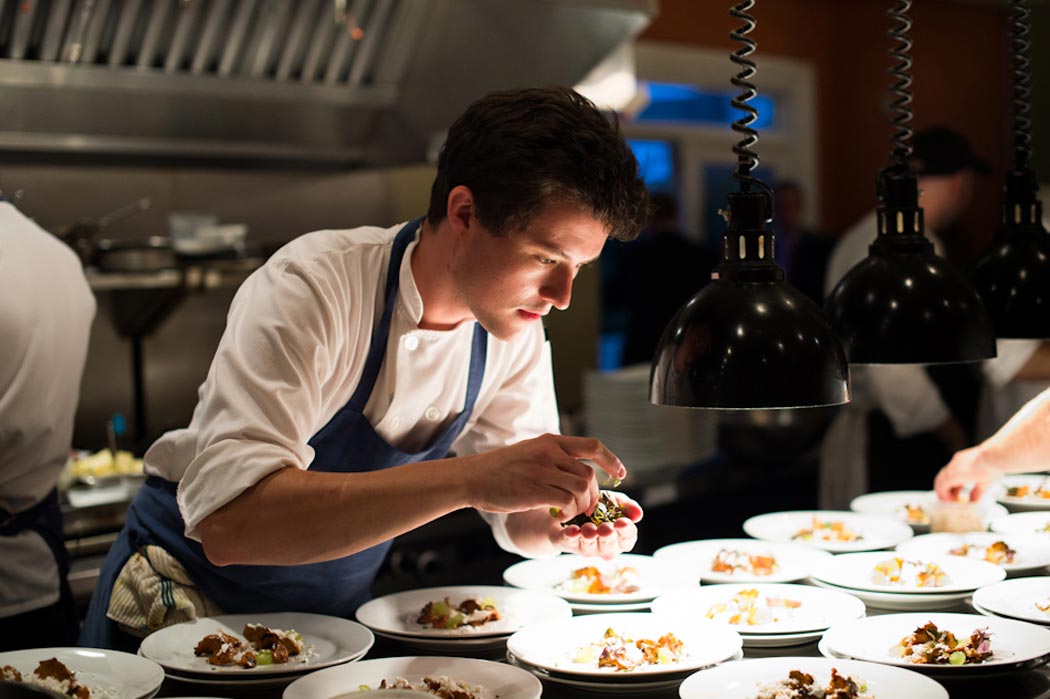
“I’d always been interested in restaurants,” says Tyler Teass, a former American Studies major. But it was only after college, when he hit the post-graduate slump so many experience, that he found a path. “I was bumming around town, didn’t know what I was going to do,” says Tease. It wasn’t long before he teamed up with a fellow cook, and the two of them opened a restaurant in Lexington, Va., called The Red Hen. Now sous chef at the Clifton Inn in Charlottesville, Tyler doesn’t consider himself to be a “super-crazy locavore,” but he does like to know where his produce comes from. “I like being able to talk to the farmers and butchers, to be able to get the best out of the region,” he says.
“Parsnips always smell like bananas to me,” he says of his dish. “So it’s breakfast flavors now that I think about it—bananas, coffee, ham, greens. Things that aren’t out of place in a morning meal.”
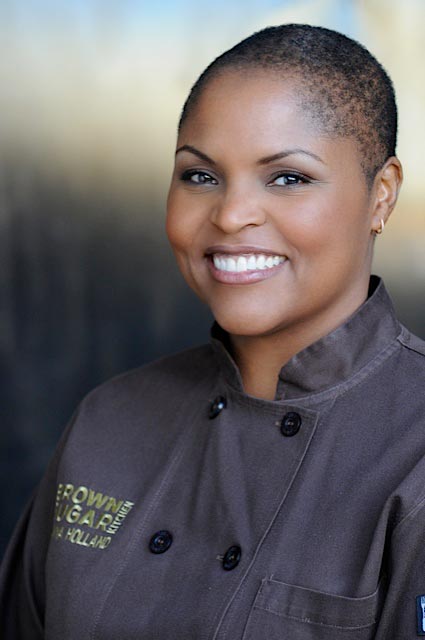
“I always liked entertaining and feeding people, having dinner parties for my friends," says Tanya Holland. "I grew up in a family that cooked a lot.” But it was a combination of aspects about the restaurant industry that drew her in. “It kind of reminds me of an interdisciplinary major,” she says. “I love all the moving parts and skill sets, not just cooking, but doing HR, financial spreadsheets and design. I love that.”
After graduating from La Varenne Ecole de Cuisine in France, she worked in Manhattan, Boston, Martha’s Vineyard, and then found herself living in California. It wasn’t long before she met people interested in investing in a restaurant, and in 2008, Brown Sugar Kitchen was born. Holland is the executive chef and owner. “It’s Southern food,” she says. “My parents are from the South, and it’s a big part of my heritage.”
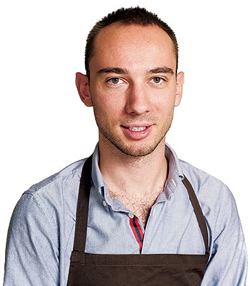
The simple name of this dish underscores Madrecki’s cooking philosophy, which he calls “worldly and minimalist.”
“When you pare things down and make them minimal the flavors can become more intense,” he says. “I try to pay respect to what the ingredients are.”
A P.R. manager by day, Madrecki started a supper club, hosted in his apartment in Clarendon, Va., called Chez Le Commis that serves six courses along with three wine pairings for $50, and draws on his experience traveling and working in restaurants in France and Copenhagen, including NOMA, rated the best restaurant in the world by Restaurant Magazine. Chez Le Commis has received accolades from the Washington Post, as well as Flavor Magazine, probably because Madrecki goes the extra mile. “I drove four hours the other day to get fish straight from the fisherman.”
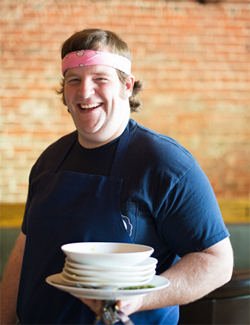
For Harrison Keevil, it all started with one meal. After graduating from UVA, he was working as a research assistant for Parliament in London. He happened to have a meal at the Berkeley hotel, and “it was just ‘wow,’ this is nothing like I’ve ever had before.” The experience sparked an interest in cooking, and living in London fanned the flame. “Going to Pearl Market, seeing the ingredients, the freshness, the quality, the hard work by these farms, it got under my skin and into my blood,” he says.
Back in the U.S., he enrolled in the culinary institute of New York. A period of working at home and abroad followed, and after a stint at the Clifton Inn, he decided it was time to start his own restaurant. Brookville, a “locally conscious” restaurant opened on the downtown mall in Charlottesville in 2010.
As for his dish, “It pays respect to both Mr. Jefferson and my mother,” he says.